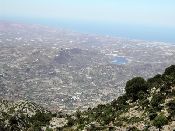| Evaluation of strategies: guidelines |
 |
|
The evaluation of the strategies suggested in Stakeholder Workshop 1 followed guidelines developed by the Centre for Development and Environment (CDE). These are based on experiences from the
The evaluation involves the use of two questionnaires, one on sustainable land management technologies (QT) and the other on sustainable land management approaches (QA).
The questionnaires ask: (i) what are the specifications of the technology, and where is it used (natural and human environment), what impact does it have and (ii) how implementation of the approach was achieved and who achieved it. Each consists of three main parts:
There are eight steps in the procedure that should be followed to enable a standardised and comprehensive evaluation of the existing and potential prevention and mitigation strategies.
Experience has shown that certain questions tend to cause confusion or difficulty and careful questionning and checking in the Review step is needed to ensure that the information collected is reliable. Description of strategies following a standardised format has enabled a database of approaches and techniques to be developed from sites world-wide. The DESIRE strategies have been added to that database.
|
|||||||||||||||||

Acknowledgement
The DESIRE project was
|
DESIRE brought together the expertise of
26 international research institutes
and non-governmental organisations.
This website does not necessarily
represent the opinion of the
European Commission. The European
Commission is not responsible for
any use that might be made of the
information contained herein. 





